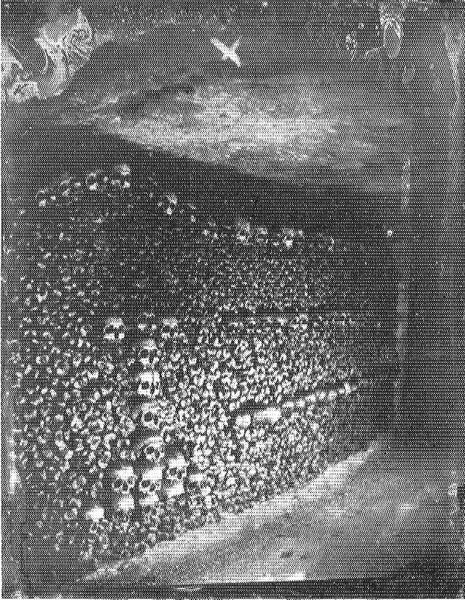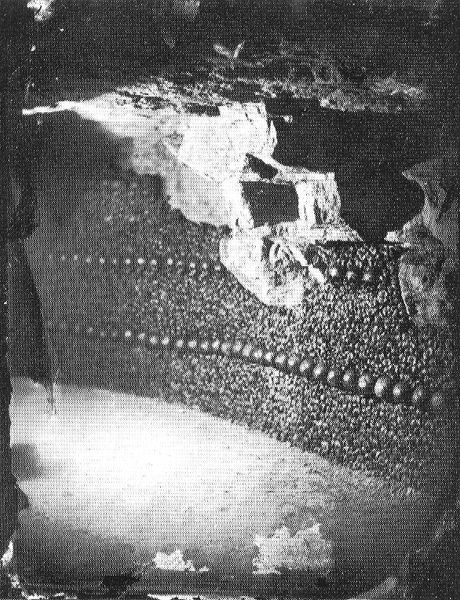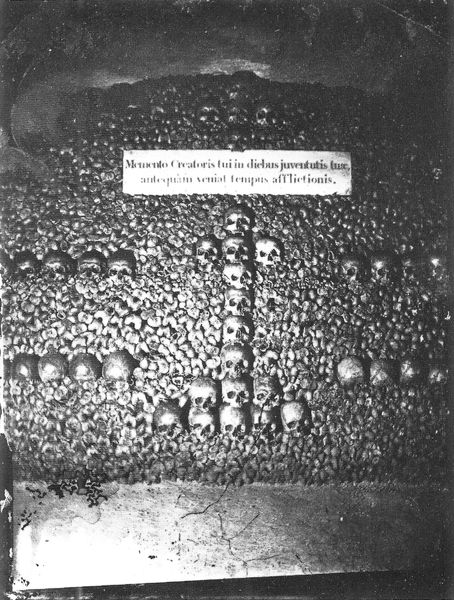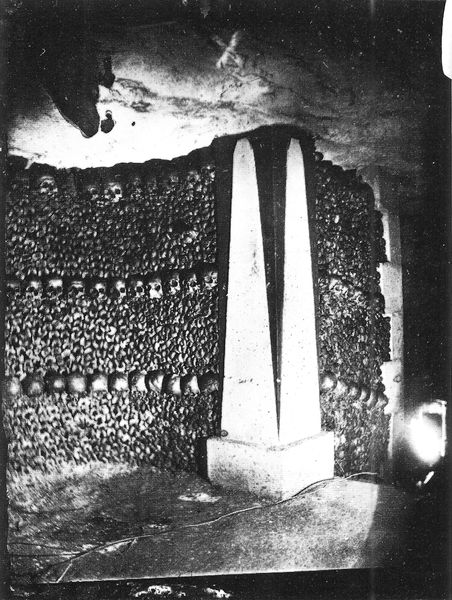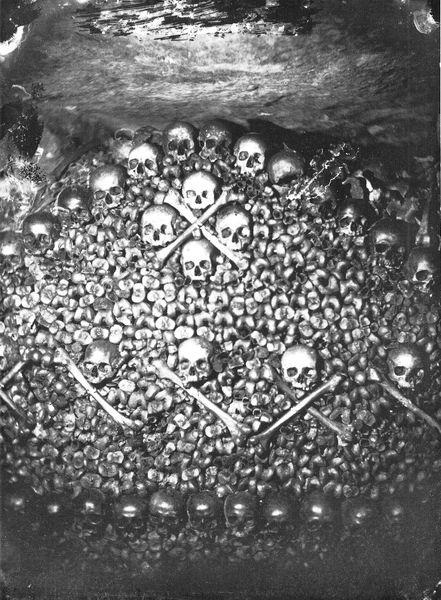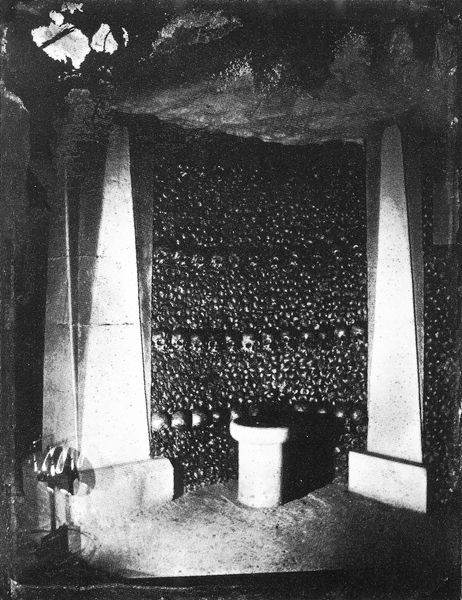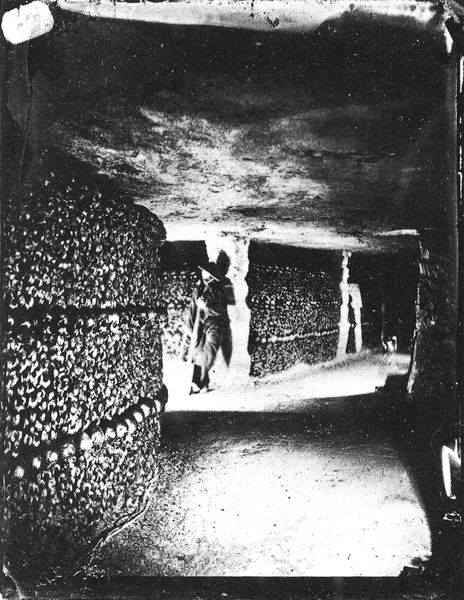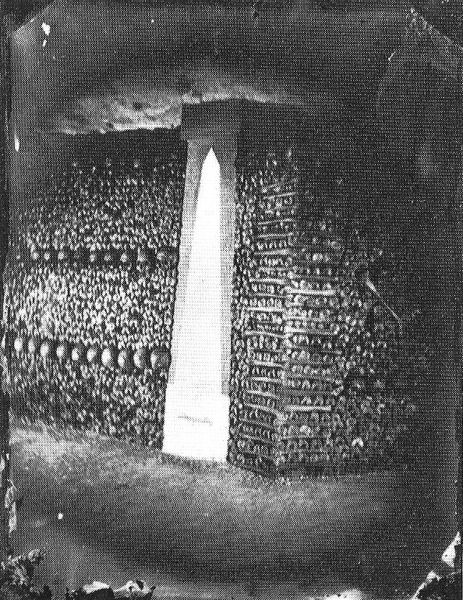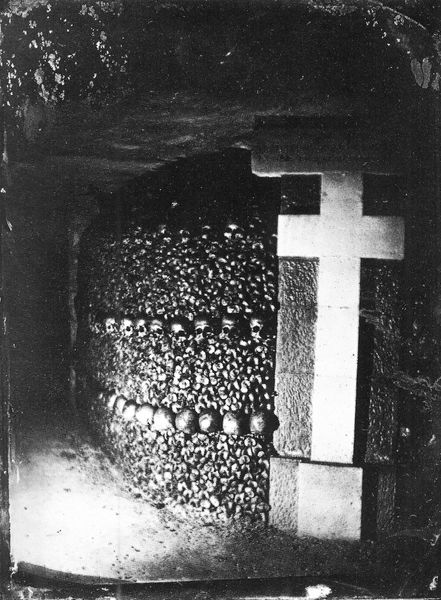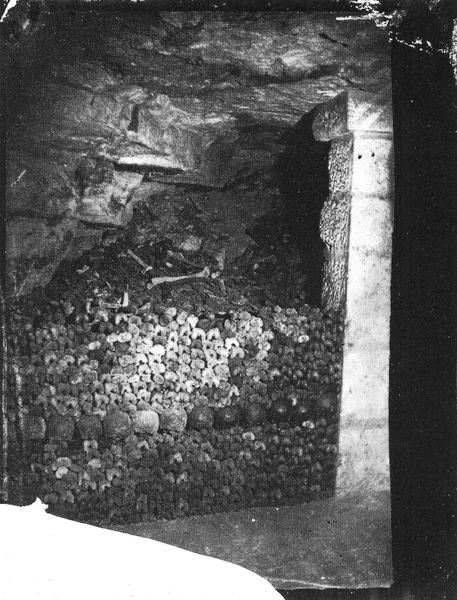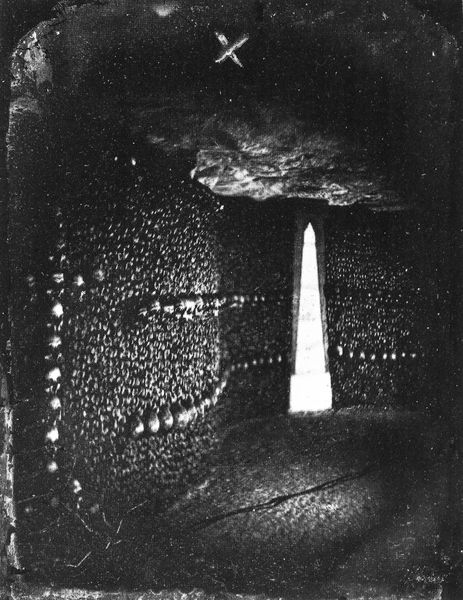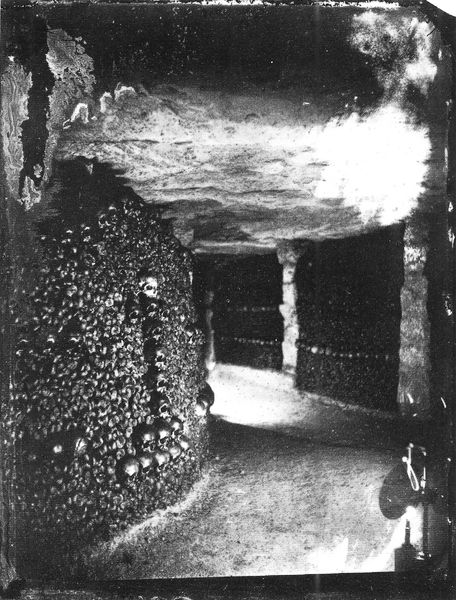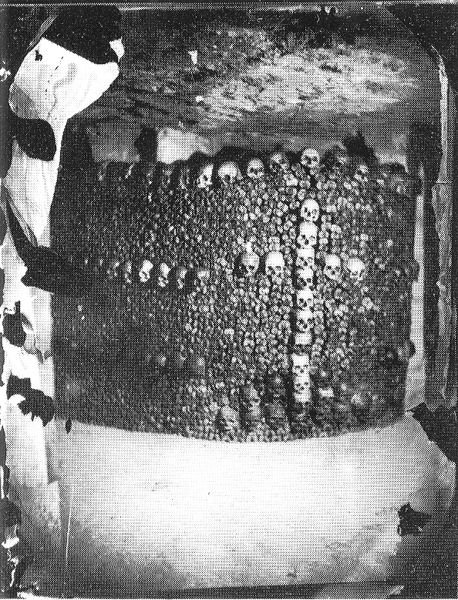
#
black and white photography
#
rugged
#
b w
#
black and white theme
#
black colour
#
black and white
#
monochrome photography
#
tread
#
natural texture
#
monochrome
Copyright: Public domain
Curator: Nadar's "Catacombes De Paris," taken around 1861. The image plunges us into the Parisian catacombs, an ossuary filled with the remains of millions. My immediate impression is one of unsettling order amidst potential chaos. Editor: Precisely. Note how the skulls are meticulously arranged. It's a chillingly aesthetic display of mortality, yet there is the human need for imposing order over this macabre scenario. Do you find a specific emotional pull from it? Curator: Yes, absolutely. The skull, as a visual symbol, is so rich and fraught with meaning across cultures and history. Its universal representation of death taps into the primal human fear of mortality. Here, multiplied to such an extent, it suggests not only individual demise but collective oblivion. Editor: I wonder about the politics embedded in that collective display, though. The bones come from overcrowded cemeteries; their relocation speaks of sanitary reforms in the 18th and 19th centuries. Was this about honoring the dead or simply managing urban space, even on that massive a scale? Curator: It becomes an exercise in recontextualization. These are not just nameless remains anymore. Stacked as a part of this great collection, there is that implication of loss and suffering inherent in the skull form but the image of mortality that is a constant to life across social stratum. Nadar turns this into a very charged statement. Editor: Nadar wasn't merely documenting, right? This was cutting-edge photography at the time, pushing the boundaries of what could be captured underground. It says much of his drive and society's view of scientific explorations as entertainment and perhaps something more. Curator: Very astute observation! These dimly lit depths are as metaphorical as they are physical spaces. And that play of shadow gives a glimpse into both the known and unknown realm. Editor: What Nadar’s photograph leaves is that we all share an ending and questions what is truly the boundary between history and legacy when even the mortal remain becomes, quite literally, groundwork for society. Curator: Indeed. The echo of humanity here speaks of the transience of earthly life and those deeply human symbols in how we cope with death. It will stay with me.
Comments
No comments
Be the first to comment and join the conversation on the ultimate creative platform.
